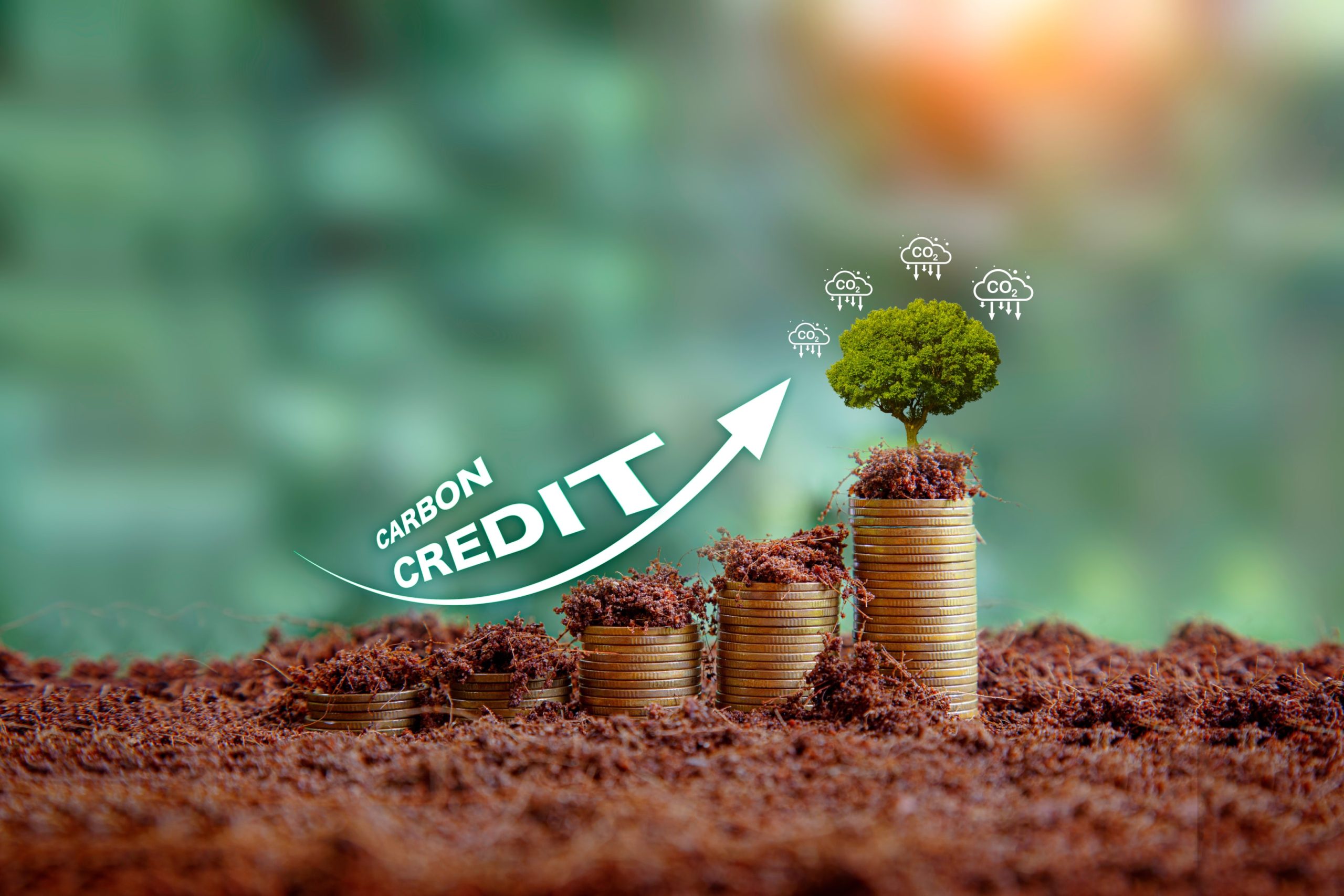
Understanding Carbon Credits and the Carbon Market
Sell carbon credits through a market-based mechanism designed to offset greenhouse gas (GHG) emissions and reduce carbon dioxide (CO2) in the atmosphere. Each carbon credit represents the reduction of one metric tonne of CO2 or its equivalent in other GHGs.
The carbon market, where these credits are traded, is experiencing significant growth. As businesses and individuals strive to reduce their carbon footprint, consumer preferences increasingly favor companies that demonstrate proactive environmental measures, thus influencing market dynamics. Carbon credits can be traded on voluntary carbon markets or within regulatory frameworks, such as cap-and-trade systems.
Understanding the carbon market, including its mechanisms, pricing, and key players, is essential for maximizing profit from selling carbon credits.
Creating Carbon Credits through Eligible Projects
Carbon credits can be created through various projects, such as renewable energy, energy efficiency, reforestation, and carbon sequestration. Reforestation and carbon leakage and projects help absorb carbon dioxide and generate carbon credits based on the amount of carbon sequestered.
Projects must create carbon offsets and achieve carbon avoidance or sequestration in ways that go beyond what would happen in typical business operations. Carbon offsets are produced through carbon farming and sequestration processes, which involve capturing and storing CO2 emissions and can generate revenue from selling carbon credits.
The Woodland Carbon Guarantee Scheme is a government-backed initiative that pays landowners for carbon benefits from creating new woodland and selling carbon credits.
Farmers and landowners can sell carbon credits by participating in the Woodland Carbon Guarantee auction.
Quantifying and Verifying Carbon Reductions
Quantifying carbon reductions accurately is a critical aspect of developing a carbon project. This process relies on established methodologies approved by major carbon standards, such as the Woodland Carbon Code. These methodologies provide guidelines for measuring the amount of CO2 reduced or how much carbon is sequestered by a project.
Verification is carried out by independent third-party organizations to ensure the integrity of the carbon credits. Verified carbon credits guarantee that the emissions reductions claimed are real, additional, and permanent, providing assurance to buyers that their investment contributes to genuine environmental benefits.
The verification process includes rigorous assessments, audits, and regular monitoring to maintain high standards of transparency and accountability.
Registering with a Carbon Standard

Projects must generate carbon offsets and ensure carbon avoidance or sequestration in ways that exceed the outcomes expected in standard business scenarios. Registration involves submitting comprehensive project documentation and verification reports to the chosen standard body.
The Woodland Carbon Code, for instance, is a certification scheme for woodland creation projects in the UK, ensuring that these projects meet high standards for carbon sequestration and sustainability. Registering with a carbon standard is crucial for issuing and selling carbon credits, as it provides legitimacy and ensures that the credits are recognized in the carbon market.
This process also facilitates the tracking and management of credits within the carbon standard’s registry. Keywords: carbon standard, project registration, Woodland Carbon Code, carbon storage and sequestration, sustainability.
Issuing and Selling Carbon Credits
Once a project is registered, carbon credits are issued into your account within the carbon standard’s registry. Each credit represents one tonne of CO2 (or equivalent) avoided or removed from the atmosphere. These credits can be sold on the open market, where prices typically range from £10 to £25 per tonne of CO2e.
Landowners and farmers can leverage their land’s ability to sequester carbon dioxide to generate and sell these credits. Carbon credits can be sold through various channels, including online carbon marketplaces, brokers, and retailers.
Additionally, they can be sold on voluntary carbon markets to help companies meet their sustainability goals, reduce emissions and achieve net-zero emissions.
Understanding Carbon Credit Pricing and Demand
The prices of carbon credits on domestic market are highly variable and changing rapidly, with a trend for European buyers to buy a mix of credits from restoration and planting projects.
Insights from the Taskforce on Scaling Voluntary Carbon Markets (TSVCM) highlight the significant projected growth of the carbon credit market, emphasizing the increasing demand for carbon credits and predicting a dramatic rise in market value.
Understanding carbon credit pricing and demand is crucial for maximizing profit from selling carbon credits.
The voluntary carbon market is expected to play a significant role in scaling up efforts to offset greenhouse gas emissions.
How to Get Paid for Carbon Credits

Landowners and farmers can generate revenue by selling carbon credits through carbon farming and sequestration processes. To understand how to get paid for carbon credits, it is essential to follow a comprehensive guide that outlines the necessary steps, standards, and regulations involved in the creation, verification, and sale of these credits.
The practices used in these processes remove CO2 from the atmosphere by converting it into organic matter within the soil and plants. To enroll in these carbon reduction programs, landowners and farmers must provide documentation of their carbon offset projects. Getting paid for carbon credits requires careful planning and execution.
Reporting and Monitoring Requirements
Continuous Monitoring and Reporting
Continuously monitoring and reporting on your project’s performance is crucial for maintaining the integrity of the carbon credits. This involves regular checks and assessments to ensure that the project is delivering the anticipated emissions reductions.
The monitoring process includes collecting data on various parameters such as CO2 levels, biodiversity impacts, and the socio-economic benefits to local communities. These data points are essential for validating the project’s effectiveness and ensuring that it remains compliant with the certification standards.
Regular Verification for Additional Credits
Regular verification is a critical component of the monitoring process. Verification involves third-party audits to confirm that the reported emissions reductions are accurate and that the project is following approved methodologies.
Successful verification can lead to the issuance of additional carbon credits, enhancing the project’s financial viability and environmental impact. This ongoing verification process helps maintain the credibility of the carbon credits in the market and reassures buyers of the carbon offsets produced the project’s integrity.
Varying Requirements by Standard and Project Type
Reporting and monitoring requirements vary depending on the carbon standard and project type. For instance, projects certified under the Woodland Carbon Code in the UK have specific guidelines for reporting forest growth, carbon sequestration rates, and biodiversity impacts.
Similarly, renewable energy projects must report on energy generation metrics and displacement of fossil fuel use. These requirements typically involve periodic submission of performance data, which can be quarterly, bi-annually, or annually, depending on the project and certification body.
Compliance with Specified Methodologies
Ensuring adherence to specified methodologies is essential for the ongoing validity and credibility of the carbon credits. Methodologies provide standardized procedures for measuring and reporting emissions reductions, ensuring consistency and transparency.
Projects must follow these methodologies meticulously to maintain their certification and market value. This includes using approved measurement tools, maintaining accurate records, and undergoing regular third-party audits.
Importance of Adherence
Adhering to these requirements is not just a regulatory necessity but also a strategic advantage. Projects that consistently meet reporting and monitoring standards are more likely to attract buyers and secure higher prices for their carbon credits.
This adherence also builds trust with stakeholders, including local communities, investors, and environmental organizations. By demonstrating a commitment to transparency and accountability, project developers can enhance the reputation and marketability of their carbon credits.
Tips for Maximizing Profit
Understanding the Carbon Market
Understanding the carbon market and pricing is crucial for maximizing profit from selling carbon credits. The carbon market is influenced by various factors, including regulatory changes, market demand, and the types of projects generating the credits.
Staying informed about these factors can help you make strategic decisions about when and where to sell your credits. For example, credits from projects with significant social and environmental co-benefits often command higher prices in the market.
Diversifying Your Carbon Credit Portfolio
Diversifying your carbon credit portfolio can help reduce risk and increase returns. This involves investing in a range of carbon offset projects, including forestry, renewable energy, and energy efficiency initiatives.
Diversification spreads risk across different project types and geographies, mitigating the impact of potential project-specific challenges. It also allows you to take advantage of varying market demands, ensuring a more stable and profitable income stream.
Building Relationships with Buyers and Brokers
Building strong relationships with buyers and brokers is essential for getting the best price for your credits. Establishing trust and credibility with these stakeholders can lead to repeat business and more favorable terms. Networking within the industry, attending relevant conferences, and participating in market forums can help you connect with potential buyers and brokers.
Additionally, providing detailed and transparent information about your projects can enhance buyer confidence and willingness to pay premium prices.
Staying Up-to-Date with Market Trends and Policy Changes
Staying up-to-date with market trends and policy changes enables informed decision-making and strategic planning. The carbon market is dynamic, with frequent changes in regulations, market demands, and technological advancements.
Keeping abreast of these developments can help you anticipate market shifts and adjust your strategies accordingly. Subscribing to industry publications, joining professional networks, and participating in training sessions can provide valuable insights into the latest market trends and policy changes.
Leveraging Strategies for Optimization
By leveraging these strategies, you can optimize your revenue from selling carbon credits. Regularly review and adjust your portfolio to align with market conditions, seek out high-quality projects with strong co-benefits, keep upfront costs and maintain rigorous reporting and verification standards. These practices will not only enhance your market position but also contribute to the broader goals of sustainability and climate action.
Common Challenges and Solutions
Ensuring Integrity of the Credits
Ensuring the integrity of the credits is one of the most common challenges in selling carbon credits. This involves maintaining high standards of project implementation, monitoring, and reporting to ensure that the emissions reductions are real and verifiable.
Working with reputable carbon standards and brokers can help you navigate these challenges. These organizations provide guidelines, support, and certification that can enhance the credibility of your credits.
Navigating the Complex Carbon Market
Navigating the complex carbon market requires a deep understanding of market dynamics, regulatory frameworks, and buyer expectations. The carbon market is multifaceted, with varying requirements and expectations across different regions and project types.
Engaging with experienced market participants, such as brokers and consultants, can provide valuable guidance and support. These experts can help you identify market opportunities, optimize your sales strategies, and ensure compliance with relevant regulations.
Ensuring Transparency and Accountability
Transparency and accountability are critical for building trust with buyers and stakeholders. Providing clear and detailed information about your projects, including methodologies, monitoring results, and verification reports, can enhance your reputation and marketability.
Implementing robust internal processes for data collection, reporting, and audit can help ensure that your projects meet high standards of transparency and accountability.
Thorough Planning and Effective Project Management

Addressing these challenges requires thorough planning and effective project management. This includes setting clear objectives, developing comprehensive project plans, and regularly reviewing and adjusting your strategies. Engaging with key stakeholders, including local communities, regulatory authorities, and environmental organizations, can provide valuable feedback and support.
By fostering strong relationships and maintaining a focus on quality and integrity, you can overcome obstacles and maximize your profit from selling carbon credits.
By following these guidelines and strategies, you can successfully navigate the carbon market, ensure the credibility of your projects, and maximize your revenue from selling carbon credits. This proactive approach will not only enhance your profitability but also contribute to global efforts to mitigate climate change and promote sustainable development.
Next Steps
If you’re interested in selling carbon credits, start by understanding the carbon market and identifying eligible projects. Develop a carbon project that has a significant, measurable impact on carbon emissions. Woodland Carbon Units (WCUs) are crucial in registering projects and selling verified carbon credits. Register with a recognized carbon standard and issue carbon credits.
Sell your carbon credits on the open market or through a broker. Continuously monitor and report on your project’s performance to maintain the integrity of the carbon credits.
